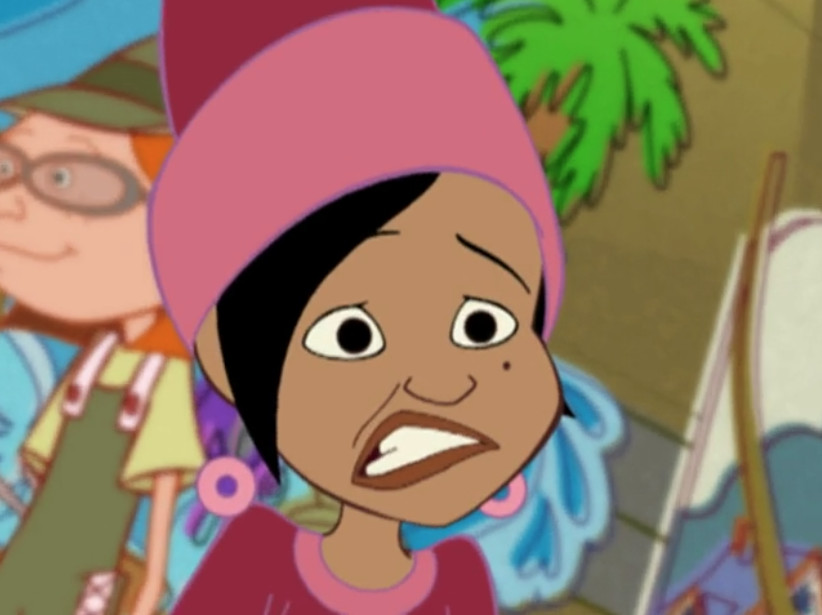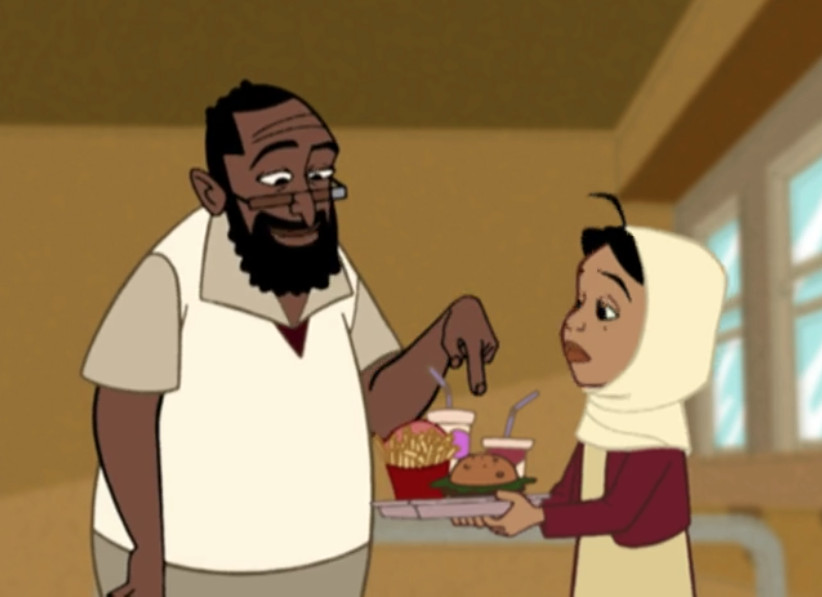Growing up, Disney Channel was more than just entertainment; it was a cultural touchstone. Shows like That’s So Raven and Kim Possible offered glimpses into social issues and empowerment, but it was an episode of The Proud Family that truly stood out. For many young viewers, including myself, this show, particularly the “Culture Shock” episode, was a significant moment in seeing diverse families on television, even if retrospect reveals a more complex picture. We will delve into how this episode, featuring the iconic Penny Proud Family, attempted to tackle cultural exchange, and re-examine its impact through a modern lens.
In the episode “Culture Shock,” part of The Proud Family‘s third season, Penny Proud and her classmates are tasked with a week-long assignment: living with a family from a different cultural background. Penny is placed with the Zamin family, Pakistani Muslim Americans. For an eight-year-old, seeing a Muslim family on a Disney cartoon was groundbreaking. The Zamins, observing Ramadan, seemed familiar and relatable. In a time where being a Muslim in suburban America often felt isolating, The Proud Family offered a sense of visibility, making me, and likely many others, feel seen. This initial positive reaction cemented The Proud Family as a benchmark for representation in my mind for years to come.
Years later, revisiting “Culture Shock” prompts a critical re-evaluation. What once felt like a heartwarming representation of Muslim culture now reveals itself to be riddled with problematic stereotypes and misrepresentations. Penny’s initial reaction to being assigned to the Zamin family is overtly negative. She physically recoils at the sight of them, feigns illness to avoid staying with them, and her father, Oscar Proud, echoes xenophobic sentiments. This sets a tone of fear and othering right from the start.
Further perpetuating stereotypes, the episode portrays starkly contrasting gender roles within the Zamin household. Radika Zamin, upon arriving at the Proud’s home, is depicted as bewildered by Trudy Proud’s role, assuming cooking and domestic duties are solely the women’s responsibility. At the Zamin’s, Mr. Zamin is shown as stern and dismissive, while Mrs. Zamin is relegated to smiling and sewing, reinforcing narrow and outdated tropes.
 Penny Proud's shocked and negative reaction upon first seeing the Zamin family in The Proud Family's 'Culture Shock' episode, highlighting initial stereotypes.
Penny Proud's shocked and negative reaction upon first seeing the Zamin family in The Proud Family's 'Culture Shock' episode, highlighting initial stereotypes.
Penny’s conversations with her friends further highlight the stereotypical portrayal. She describes the Zamins as “plain weird,” focusing on the father’s lack of smiles, the mother’s sewing, and their family viewing habits of “soap operas and cricket matches broadcast in Urdu.” Ironically, at the time of its original airing, these were the very details that might have felt like a point of connection for some viewers seeking representation, a desperate grasp for normalcy in a media landscape lacking diversity.
However, amidst these flaws, “Culture Shock” does offer glimpses of positive intent. Mrs. Zamin’s explanation to Penny about choosing to wear a hijab, emphasizing personal identity over external judgment, presents a nuanced perspective. Oscar Proud’s attempt to accommodate Radika by making pork-free “Proud Snacks” is a gesture of cross-cultural consideration, however imperfect. A school teacher’s gentle reminder to Penny about the significance of Ramadan and the Zamins’ invitation also underscores the episode’s attempt to promote understanding and respect.
 A scene from 'The Proud Family: Culture Shock' showing Penny Proud with the Zamin family, illustrating the cultural exchange premise of the episode despite its problematic portrayal of Muslim Americans.
A scene from 'The Proud Family: Culture Shock' showing Penny Proud with the Zamin family, illustrating the cultural exchange premise of the episode despite its problematic portrayal of Muslim Americans.
The episode’s climax attempts to address its earlier missteps. Penny witnesses the Zamin family become victims of a hate crime and participates in their Eid al-Fitr celebration. Her concluding speech aims to bridge cultural divides, stating that despite initial perceptions of difference, the Zamins are, at their core, just like any other family. This message of shared humanity is crucial, yet the path to get there is paved with harmful stereotypes that undermine its impact.
The writers likely intended to exaggerate prejudices to amplify the episode’s message of tolerance. However, the reliance on stereotypes feels unnecessary and damaging. While the episode’s existence provided a sense of comfort during a period of heightened Islamophobia post-9/11, it’s disheartening to realize that this comfort came from a place of internalized cultural aversion, accepting flawed representation over none at all.
Even years after “Culture Shock” aired, the landscape of Muslim representation in American television remains sparse and often stereotypical. The call for nuanced and authentic portrayals of Muslim families, akin to shows like Modern Family or Black-ish, is still urgent. Audiences are ready for depictions of Muslim characters as ordinary people, not just figures of conflict or extremism. The hope remains that the entertainment industry will recognize the demand for genuine representation and finally deliver accurate and respectful portrayals of Muslim families on screen, moving beyond caricatures and fulfilling the promise of truly inclusive storytelling for shows featuring families like the Penny Proud family.
